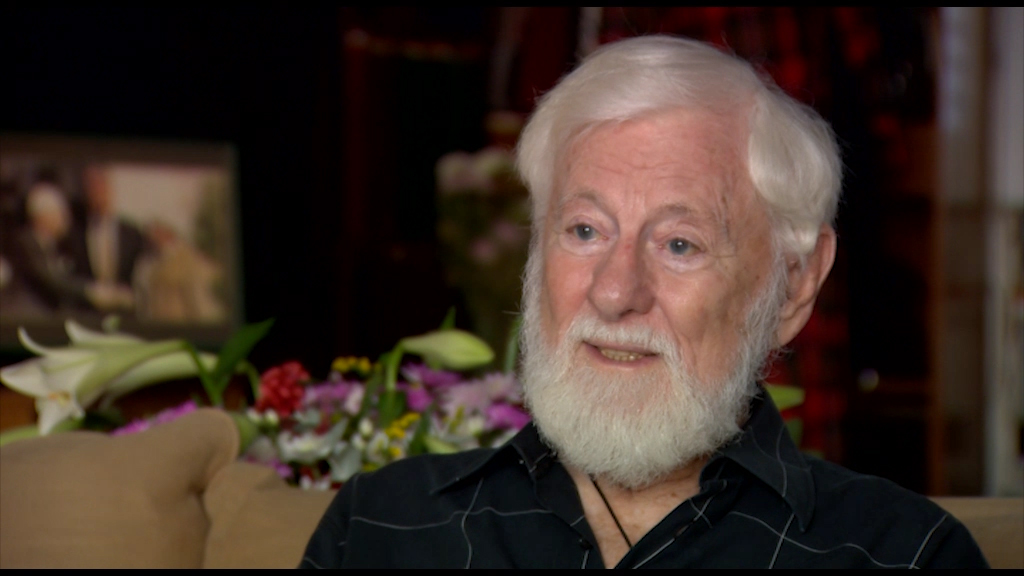NEXT STORY

Selling his soul to the devil
RELATED STORIES

NEXT STORY

Selling his soul to the devil
RELATED STORIES


|
Views | Duration | |
|---|---|---|---|
| 91. Kurt Becher the SS officer | 98 | 03:06 | |
| 92. Kurt Becher strikes a deal with Israel Kastner | 67 | 02:22 | |
| 93. Israel Kastner’s trial – the turning point | 50 | 02:46 | |
| 94. Selling his soul to the devil | 50 | 03:07 | |
| 95. My interview with Israel Kastner | 49 | 04:30 | |
| 96. Israel Kastner’s murder | 38 | 02:29 | |
| 97. Did Shin Bet kill Israel Kastner? | 43 | 04:48 | |
| 98. Adolf Eichmann is captured | 36 | 03:18 | |
| 99. The Eichmann trial | 50 | 05:48 | |
| 100. May Allah have mercy | 29 | 04:53 |


עכשיו, קסטנר עומד על דוכן, יום אחרי יום, זה כבר התחיל להתיש אותו מאוד, חקירת שתי וערב של תמיר. תמיר היה מאוד טוב בזה. ובמהלך העדות, עדיין העדות הראשית, זאת אומרת עדות מטעם התביעה, כנהוג במשפטים, התביעה מגישה מסמכים. כל מסמך שהתביעה מגישה, ההגנה צריכה לראות, ואם ההגנה לא מתנגדת זה נכנס לתיק. אם היא מתנגדת, יש על זה דיון והשופט צריך להחליט אם זה קביל או לא קביל. תמיר, בין שאר התכונות שלו, הייתה לו ראייה מאוד מהירה ותפיסה מאוד מהירה. התביעה מגישה מסמכים באמצעות קסטנר, ותמיר מבקש לראות, כמובן. ערימה כזאת. עובר, עובר, עובר, לא מתנגד. בסדר, הכל מוגש ונכנס לתיק. ואז, ביום החמישי-שישי של העדות של קסטנר, תמיר שואל: "תגיד לי מר קסטנר, האם כל קציני האס.אס. הבכירים היו פושעים?" 'כן'. "אם כן, נכון שלהגן על הפושעים האלה זה פשע?" 'כן'. "זאת אומרת לעזור לקצין בכיר של האס.אס. לקבל זיכוי במשפט זה פשע?" באותו רגע קסטנר תפס והחוויר אבל כבר לא הייתה לו נסיגה, הוא אומר: 'כן'. ואז תמיר מבקש את המסמך הזה. שם את זה. 'מה זה? אתה העדת ושחררת את הפושע הנאצי הזה קורט בֶּכֶר'. זה היה המפנה של המשפט.
Now, Kastner was standing in the witness box, day after day. Tamir's cross-examination started to wear him out. Tamir was very good at it. During the testimony, still during the initial testimony, that is to say, testimony on behalf of the prosecution, as is customary during trials, the prosecution submits documents. Every document that the prosecutor submits, the defence needs to see, and if the defence does not object, it is entered into the file. If they object, there is a debate and the judge must decide whether the document is admissible or not. Tamir, among his other characteristics, was very quick, very perceptive. The prosecution submitted documents through Kastner, and Tamir asked to see them, of course. A big pile. That was 'okay', 'okay', 'okay', 'no objection'. Everything was submitted and entered into the file. Then, on the fifth or sixth day of Kastner's testimony, Tamir asks: 'Tell me, Mr Kastner, whether all the high-ranking SS officers were criminals?' 'Yes'. 'If so, isn't defending these criminals a crime?' 'Yes'. 'That means helping to acquit a high-ranking officer of the SS is a crime?' Kastner suddenly realized what was happening and turned pale, but there was no longer any way back and he said: 'Yes'. Then Tamir asked for this document. That one there. 'What is it? You testified and released the Nazi criminal Kurt Becher'. That was the turning point of the trial.
Uri Avnery (1923-2018) was an Israeli writer, journalist and founder of the Gush Shalom peace movement. As a teenager, he joined the Zionist paramilitary group, Irgun. Later, Avnery was elected to the Knesset from 1965 to 1974 and from 1979 to 1981. He was also the editor-in-chief of the weekly news magazine, 'HaOlam HaZeh' from 1950 until it closed in 1993. He famously crossed the lines during the Siege of Beirut to meet Yasser Arafat on 3 July 1982, the first time the Palestinian leader ever met with an Israeli. Avnery was the author of several books about the Israeli-Palestinian conflict, including '1948: A Soldier's Tale, the Bloody Road to Jerusalem' (2008); 'Israel's Vicious Circle' (2008); and 'My Friend, the Enemy' (1986).
Title: Israel Kastner’s trial – the turning point
Listeners: Anat Saragusti
Anat Saragusti is a film-maker, book editor and a freelance journalist and writer. She was a senior staff member at the weekly news magazine Ha'olam Hazeh, where she was prominent in covering major events in Israel. Uri Avnery was the publisher and chief editor of the Magazine, and Saragusti worked closely with him for over a decade. With the closing of Ha'olam Hazeh in 1993, Anat Saragusti joined the group that established TV Channel 2 News Company and was appointed as its reporter in Gaza. She later became the chief editor of the evening news bulletin. Concurrently, she studied law and gained a Master's degree from Tel Aviv University.
Tags: Rezső Kasztner, Rudolf Israel Kastner, Kurt Andreas Ernst Becher, Schmuel M Tamir
Duration: 2 minutes, 46 seconds
Date story recorded: October 2015
Date story went live: 10 March 2017